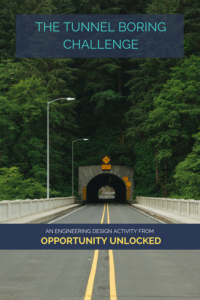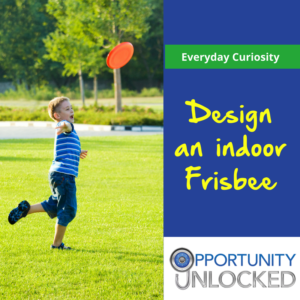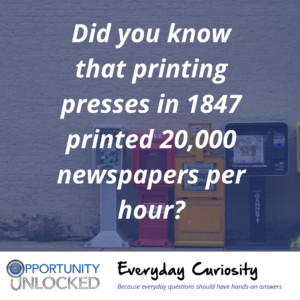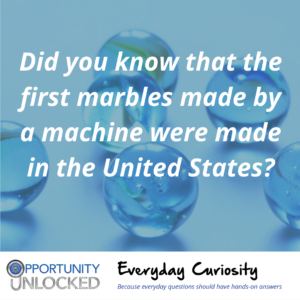Hello my friends! Today I wanted to dive into talking a bit about the Electoral College and voter representation in the United States. I recently saw a picture going around Facebook that compared the electoral power of Wyoming to California. Wyoming, with 247 thousand people, has the smallest state population but has three votes in the Electoral College. California, with 28,357 thousand people, has the largest state population and only has 55 votes in the Electoral College. Because 247/3 is much, much bigger than 28357/55, voters in Wyoming have a lot more power than voters in California. But there are 48 other states and the District of Columbia to consider when asking a question like “Does your vote count?”
I wanted to dig in a bit more to answering this question, so I found a spreadsheet from the US Census Bureau that has information about each state’s total population (which includes people who aren’t citizens yet), the number of citizens who live in each state, the number of people who registered to vote, and the number of people who actually voted in the 2012 election. I chose the 2012 election because more people tend to vote in Presidential elections. (It takes time for statisticians to make this kind of spreadsheet, so the 2016 numbers are not yet available.) So, what do the numbers say?
Any time we are trying to analyze statistics, we need to be careful about the question we ask. There are a lot of different ways to look at the numbers. To analyze voting data, I looked at different ratios. Specifically, I looked at the number of people represented by one electoral vote. When this number is small, you have a lot of voting power. When this number is big, you have less voting power.
Which state’s population has the most voting power?
The United State Census counts everyone who lives in the state. This number is used to decide how many electoral votes a particular state gets. There are 235,248 thousand people living in the United States. If you divide that number by 538, you get a little over 437 thousand people per electoral vote nationwide. 18 states have less voting power than the national average. If you live in New York, you have the largest ratio. The state’s population of 15,066 thousand divided by 29 electoral votes means that you have approximately 520 thousand people represented by one electoral vote. The top ten states with the lowest voting power are (in order): New York, Florida, California, Pennsylvania, Texas, Ohio, North Carolina, Illinois, New Jersey, and Massachusetts. If you live in Wyoming, you have the smallest ratio. The state’s population of 427 thousand people divided by 3 electoral votes means that you have approximately 142 thousand people represented by one electoral vote. The top ten areas with the highest voting power are (in order): Wyoming, Vermont, Alaska, District of Columbia, North Dakota, Rhode Island, South Dakota, Delaware, Hawaii, and Montana.
Okay, but which state’s citizenry has the most influence over the election?
Electoral votes are assigned based on population, but in order to have your vote count, you need to be a citizen of the United States. There are 20 million people who live in the United States who are not citizens. When you look at the number of citizens in a state, the voting power changes. If you live in Ohio, you have the largest ratio of number of citizens to electoral votes. There are 8,550 thousand citizens living in Ohio represented by the state’s 18 electoral votes. This means that 475 thousand citizens are represented by one electoral vote. The top ten list also changes order where some of the states change. Now the top ten states with the lowest voting power are (in order): Ohio, Pennsylvania, Florida, Michigan, New York, North Carolina, Illinois, Missouri, Virginia, and Massachusetts. I found a similar shift when I looked at the states with the most voting power. Once again, Wyoming leads the list with the smallest ratio. Wyoming has 419 thousand citizens, meaning that approximately 140 thousand people are represented by one electoral vote. The new list of places with highest voting power are (in order): Wyoming, District of Columbia, Vermont, Alaska, North Dakota, Rhode Island, South Dakota, Delaware, Hawaii, and New Hampshire.
But wait. If I am talking about the power of my vote, I need to know how registered voters can impact the election.
When I looked at the number of registered voters, the nationwide count changed significantly. Only 71% of citizens in the United States are registered to vote. Looking at data across the entire United States, there are approximately 285 thousand registered voters for every electoral vote. The state of North Carolina has 5,295 thousand registered voters who are represented by 15 electoral votes. This means that 353 thousand registered voters make up 1 electoral vote. Looking at the number of registered voters per electoral vote, the top 10 states are (in order): North Carolina, Michigan, Massachusetts, Pennsylvania, Missouri, Ohio, Wisconsin, Virginia, Illinois, and Florida. Because voter registration is reasonably consistent, the list of high power voters doesn’t change much. Wyoming leads the list, followed by Vermont, Alaska, North Dakota, District of Columbia, Hawaii, Rhode Island, South Dakota, Delaware, and Nebraska.
The only way to have power as a voter is to vote. Which state’s voters have the most power?
Approximately 132,948,000 people voted in the 2012 election, meaning that there were just over 247 thousand voters for every electoral vote. Surprisingly, the state of Wisconsin emerges as the state with the lowest voting power. 3,127 thousand voters cast ballots in 2012 to decide the state’s 10 electoral votes. This means that approximately 313 thousand voters were represented by one electoral vote. Looking at the number of voters per electoral vote, the top 10 states are (in order): Wisconsin, North Carolina, Massachusetts, Michigan, Ohio, Pennsylvania, Virginia, Minnesota, Missouri, and Florida. The states with the most power haven’t changed that much. Wyoming still leads the pack, and is now followed by Alaska, Vermont, North Dakota, District of Columbia, Rhode Island, Hawaii, South Dakota, and West Virginia.
Stepping back from the ratios for a bit, there are twelve areas that come up as having the “most powerful” voters. These areas are Wyoming, Vermont, Alaska, District of Columbia, North Dakota, Rhode Island, South Dakota, Hawaii, Delaware, Montana, Nebraska, and New Hampshire. Together, these places have 41 electoral votes and a total population of 8,790 people. They are a combination of rural and urban areas and rarely vote together as a block. When we do any kind of statistical analysis, it is important to ask what the numbers mean and how different numbers relate to one another. When I first saw the image on Facebook, I thought that California would be at the top of one or more lists of the least powerful states. The only list where California was in the top ten states was looking at the total population. The states that appeared on all four “least powerful” voter lists were Ohio, Pennsylvania, and North Carolina. Developing rules about how you want to compare numbers is an important part of statistics.
I’d love to hear from you in the comments. What math questions leave you wondering? What math questions do you find the most interesting?








 Getting information matters. One reason why the internet is so powerful is that we can find out about newsworthy events immediately as they happen. But it has not always been that way. Before the internet, most people got their news from newspapers.
Getting information matters. One reason why the internet is so powerful is that we can find out about newsworthy events immediately as they happen. But it has not always been that way. Before the internet, most people got their news from newspapers. So many games can be played with small round balls. We don’t really know who invented marbles because kids have probably always played with nuts, rocks, and small balls made from all kinds of other materials. But did you know that many marbles are made of glass?
So many games can be played with small round balls. We don’t really know who invented marbles because kids have probably always played with nuts, rocks, and small balls made from all kinds of other materials. But did you know that many marbles are made of glass?